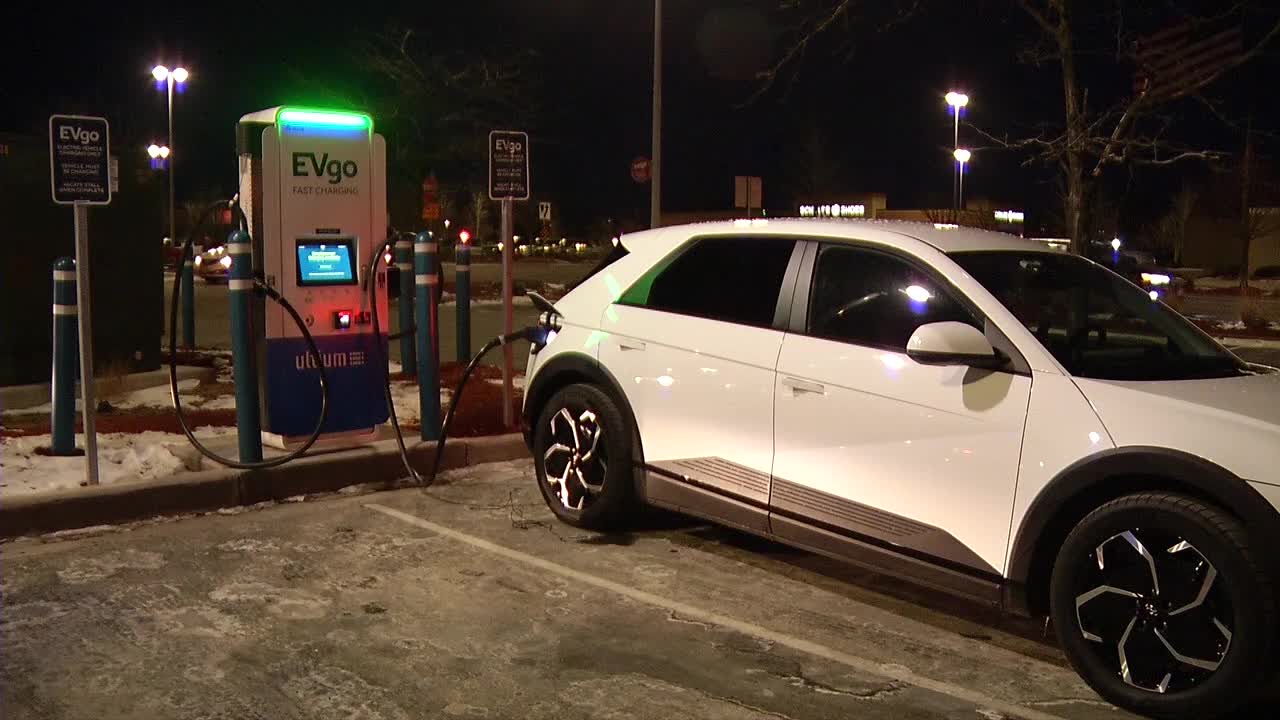Read More:
Electric Vehicle Owners Facing Challenges in Winter Weather
Electric Vehicle Owners Facing Challenges in Winter Weather
Transition Word: Furthermore
Transition Word: Additionally
Electric vehicle owners are finding themselves facing unique challenges as winter weather sets in. While these eco-friendly vehicles have numerous advantages, they also come with their share of drawbacks. Winter conditions such as freezing temperatures, snow-covered roads, and limited range due to battery performance are all causing headaches for EV owners.
Decreased Battery Performance in Cold Weather
One major issue that EV owners face during winter is the decreased battery performance. Cold weather affects the efficiency of the battery, resulting in lower range and a shorter driving distance. The chemicals inside the battery slow down, making it challenging for electric vehicles to maintain optimum performance. Additionally, battery capacity decreases, leading to more frequent charging sessions.
Longer Charging Times
Another challenge faced by electric vehicle owners is the longer charging times in extreme cold temperatures. As the temperature drops, charging speeds decrease, causing a longer time for the battery to reach its full capacity. This can be a significant inconvenience, especially for EV owners who rely on their vehicles for daily commutes or long-distance travel.
Limited Access to Charging Stations
During winter, access to charging stations can become even more limited due to adverse weather conditions. Snow-covered charging points and icy roads can make it difficult to reach and utilize these facilities. EV owners often find themselves searching for alternate charging options or waiting for the weather to improve.
Necessity for Preheating
In cold climates, electric vehicles require preheating before driving to ensure optimal performance. This involves using power from the car’s battery to warm up the cabin and defrost the windows. However, preheating drains the battery, reducing the overall range of the vehicle. EV owners must carefully manage their battery usage during winter to avoid running out of power during their journeys.
Strategies to Overcome Winter Challenges
Despite these challenges, there are several strategies that electric vehicle owners can employ to mitigate the impact of winter weather on their driving experience. These include planning routes with charging stations in mind, utilizing smartphone apps to locate available charging points, and installing home charging stations to minimize reliance on public infrastructure.
Furthermore, EV owners can optimize their driving habits by driving at moderate speeds, avoiding rapid acceleration, and minimizing the use of energy-consuming features such as heated seats and headlights. By adopting these strategies, electric vehicle owners can navigate through winter weather more efficiently and effectively.
Conclusion
While electric vehicles offer a sustainable and eco-friendly mode of transportation, they do present challenges for owners during winter weather. Decreased battery performance, longer charging times, limited access to charging stations, and the necessity for preheating are some of the difficulties that EV owners must contend with. However, with careful planning, smart usage, and the implementation of strategies, these challenges can be overcome, allowing electric vehicle owners to enjoy their eco-friendly rides throughout the winter season.
Electric Vehicle Owners Facing Challenges in Winter Weather
Transition Word: Furthermore
Transition Word: Additionally
Electric vehicle owners are finding themselves facing unique challenges as winter weather sets in. While these eco-friendly vehicles have numerous advantages, they also come with their share of drawbacks. Winter conditions such as freezing temperatures, snow-covered roads, and limited range due to battery performance are all causing headaches for EV owners.
Decreased Battery Performance in Cold Weather
One major issue that EV owners face during winter is the decreased battery performance. Cold weather affects the efficiency of the battery, resulting in lower range and a shorter driving distance. The chemicals inside the battery slow down, making it challenging for electric vehicles to maintain optimum performance. Additionally, battery capacity decreases, leading to more frequent charging sessions.
Longer Charging Times
Another challenge faced by electric vehicle owners is the longer charging times in extreme cold temperatures. As the temperature drops, charging speeds decrease, causing a longer time for the battery to reach its full capacity. This can be a significant inconvenience, especially for EV owners who rely on their vehicles for daily commutes or long-distance travel.
Limited Access to Charging Stations
During winter, access to charging stations can become even more limited due to adverse weather conditions. Snow-covered charging points and icy roads can make it difficult to reach and utilize these facilities. EV owners often find themselves searching for alternate charging options or waiting for the weather to improve.
Necessity for Preheating
In cold climates, electric vehicles require preheating before driving to ensure optimal performance. This involves using power from the car’s battery to warm up the cabin and defrost the windows. However, preheating drains the battery, reducing the overall range of the vehicle. EV owners must carefully manage their battery usage during winter to avoid running out of power during their journeys.
Strategies to Overcome Winter Challenges
Despite these challenges, there are several strategies that electric vehicle owners can employ to mitigate the impact of winter weather on their driving experience. These include planning routes with charging stations in mind, utilizing smartphone apps to locate available charging points, and installing home charging stations to minimize reliance on public infrastructure.
Furthermore, EV owners can optimize their driving habits by driving at moderate speeds, avoiding rapid acceleration, and minimizing the use of energy-consuming features such as heated seats and headlights. By adopting these strategies, electric vehicle owners can navigate through winter weather more efficiently and effectively.
Conclusion
While electric vehicles offer a sustainable and eco-friendly mode of transportation, they do present challenges for owners during winter weather. Decreased battery performance, longer charging times, limited access to charging stations, and the necessity for preheating are some of the difficulties that EV owners must contend with. However, with careful planning, smart usage, and the implementation of strategies, these challenges can be overcome, allowing electric vehicle owners to enjoy their eco-friendly rides throughout the winter season.
Electric vehicle owners are finding themselves facing unique challenges as winter weather sets in. While these eco-friendly vehicles have numerous advantages, they also come with their share of drawbacks. Winter conditions such as freezing temperatures, snow-covered roads, and limited range due to battery performance are all causing headaches for EV owners.
Decreased Battery Performance in Cold Weather
One major issue that EV owners face during winter is the decreased battery performance. Cold weather affects the efficiency of the battery, resulting in lower range and a shorter driving distance. The chemicals inside the battery slow down, making it challenging for electric vehicles to maintain optimum performance. Additionally, battery capacity decreases, leading to more frequent charging sessions.
Longer Charging Times
Another challenge faced by electric vehicle owners is the longer charging times in extreme cold temperatures. As the temperature drops, charging speeds decrease, causing a longer time for the battery to reach its full capacity. This can be a significant inconvenience, especially for EV owners who rely on their vehicles for daily commutes or long-distance travel.
Limited Access to Charging Stations
During winter, access to charging stations can become even more limited due to adverse weather conditions. Snow-covered charging points and icy roads can make it difficult to reach and utilize these facilities. EV owners often find themselves searching for alternate charging options or waiting for the weather to improve.
Necessity for Preheating
In cold climates, electric vehicles require preheating before driving to ensure optimal performance. This involves using power from the car’s battery to warm up the cabin and defrost the windows. However, preheating drains the battery, reducing the overall range of the vehicle. EV owners must carefully manage their battery usage during winter to avoid running out of power during their journeys.
Strategies to Overcome Winter Challenges
Despite these challenges, there are several strategies that electric vehicle owners can employ to mitigate the impact of winter weather on their driving experience. These include planning routes with charging stations in mind, utilizing smartphone apps to locate available charging points, and installing home charging stations to minimize reliance on public infrastructure.
Furthermore, EV owners can optimize their driving habits by driving at moderate speeds, avoiding rapid acceleration, and minimizing the use of energy-consuming features such as heated seats and headlights. By adopting these strategies, electric vehicle owners can navigate through winter weather more efficiently and effectively.
Conclusion
While electric vehicles offer a sustainable and eco-friendly mode of transportation, they do present challenges for owners during winter weather. Decreased battery performance, longer charging times, limited access to charging stations, and the necessity for preheating are some of the difficulties that EV owners must contend with. However, with careful planning, smart usage, and the implementation of strategies, these challenges can be overcome, allowing electric vehicle owners to enjoy their eco-friendly rides throughout the winter season.

Read More:
- Sweeping public safety bill in D.C. aims to increase security, undoing past changes
- Get Ready for Enchanting Adventures in Season 4 with Witch Doctor
- Talk therapy shown to be effective in addressing psychological factors contributing to back pain
- Microsoft eliminates Android app integration on Windows 11
- Seven Years Later: Racing Game Enjoys Explosive Success on Steam Thanks to Epic Sale











+ There are no comments
Add yours